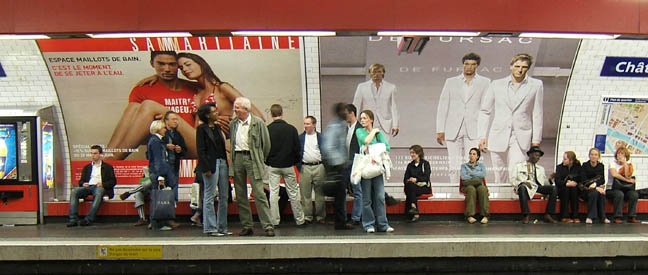Tom's Guide to Paris
Getting around in Paris
Whether on foot or in a bus, train, or taxi, it's easy to navigate around Paris and to see things on your way
Moving about on your own two feet
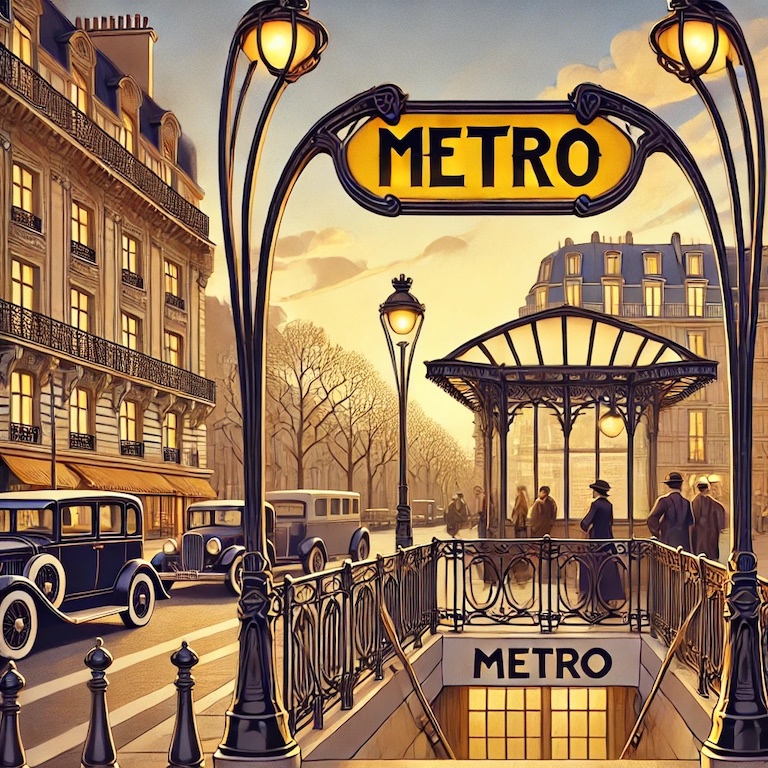
First off, Paris is an unusually walkable city. It’s about 38 square miles in area, which makes it about the same land size as Miami, but unlike Miami it’s a near perffect oval, which means there aren’t lots of exaggerated distances between any two points. You like to walk? Great! You’ll be able to walk among most of the major sights in the city.
As I point out on the “Where to Stay in Paris” page, please know what you’re doing before you succumb to the urge to find a hotel near the Eiffel Tower. Aside from the tower itself, there’s not much else in the neighborhood, which is pretty sedate, and it’s rather far from the rest of the sights you’ll likely be visiting. If that’s your thing, fine. But if you like interesting and productive walks, consider something more towards the center of the city. Tom suggests somewhere in this area of the city, which doesn't mean you have to be smack-dab in the center (for which you'd likely pay a bit of a premium), but wherever in this general areas seems nicest to you and to your wallet. Keep in mind that the best catches always go to the best hunters. Given that most people can walk 3 kilometers in about 35–40 minutes, the more centrally located you are the more productive your walking will be in terms of sight-seeing. In short, you’ll see things (and eat things) you would otherwise never have encountered.
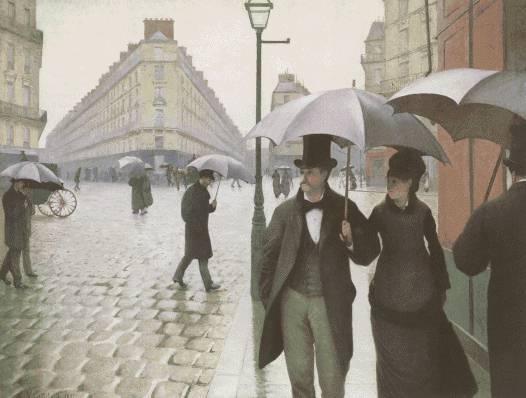
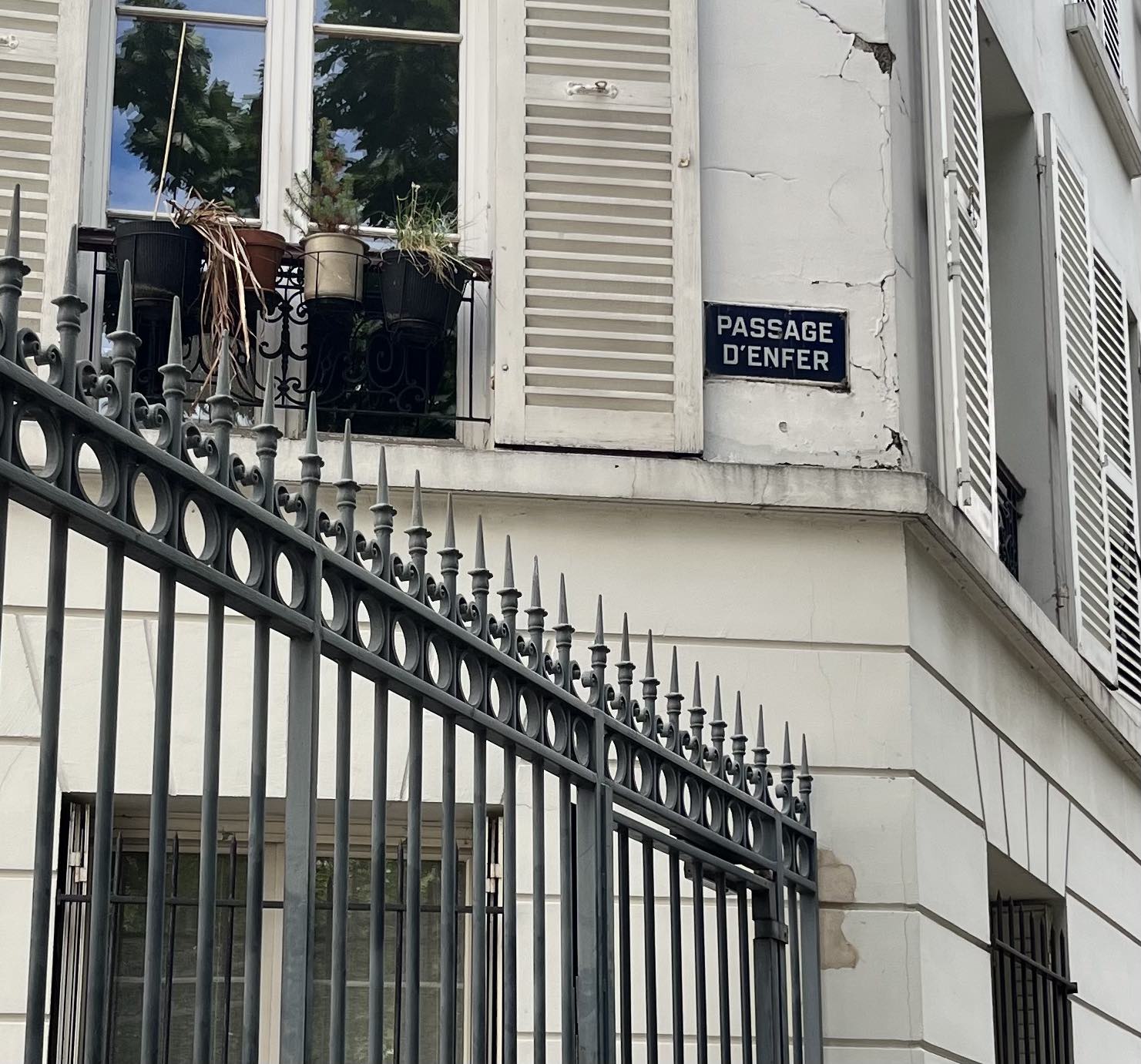 Paris is increasingly pedestrian- (and bicycle-) friendly—some large highways have been closed to vehicle traffic and are now absolutely fantastic pedestrian havens. Streets are well marked (typically on buildings at the beginning and end of a street, one story above street level, as at left), and there are pedestrian crossings all over the place. And despite the reputation of some European drivers, they respect those crossings quite well. One thing to watch for, however, is the manner of negotiating oncoming pedestrian traffic. It's different in France than in the U.S.—for example, people won't naturally or necessarily turn to the right to avoid you. In fact, they don't seem to be paying any attention to you at all. After many years, I think I’ve figured it out. It’s kind of like basketball: each pedestrian has the ball (in their view) and you’re a defender actively getting in their way. The way to avoid this, though—and this is not like basketball—is to look 5 or 10 feet beyond the people coming in your direction. Somehow they sense this and they’ll get out of your way. I often wonder what happens to French people when they're visiting in the U.S.—I bet they get banged up a lot.
Paris is increasingly pedestrian- (and bicycle-) friendly—some large highways have been closed to vehicle traffic and are now absolutely fantastic pedestrian havens. Streets are well marked (typically on buildings at the beginning and end of a street, one story above street level, as at left), and there are pedestrian crossings all over the place. And despite the reputation of some European drivers, they respect those crossings quite well. One thing to watch for, however, is the manner of negotiating oncoming pedestrian traffic. It's different in France than in the U.S.—for example, people won't naturally or necessarily turn to the right to avoid you. In fact, they don't seem to be paying any attention to you at all. After many years, I think I’ve figured it out. It’s kind of like basketball: each pedestrian has the ball (in their view) and you’re a defender actively getting in their way. The way to avoid this, though—and this is not like basketball—is to look 5 or 10 feet beyond the people coming in your direction. Somehow they sense this and they’ll get out of your way. I often wonder what happens to French people when they're visiting in the U.S.—I bet they get banged up a lot.
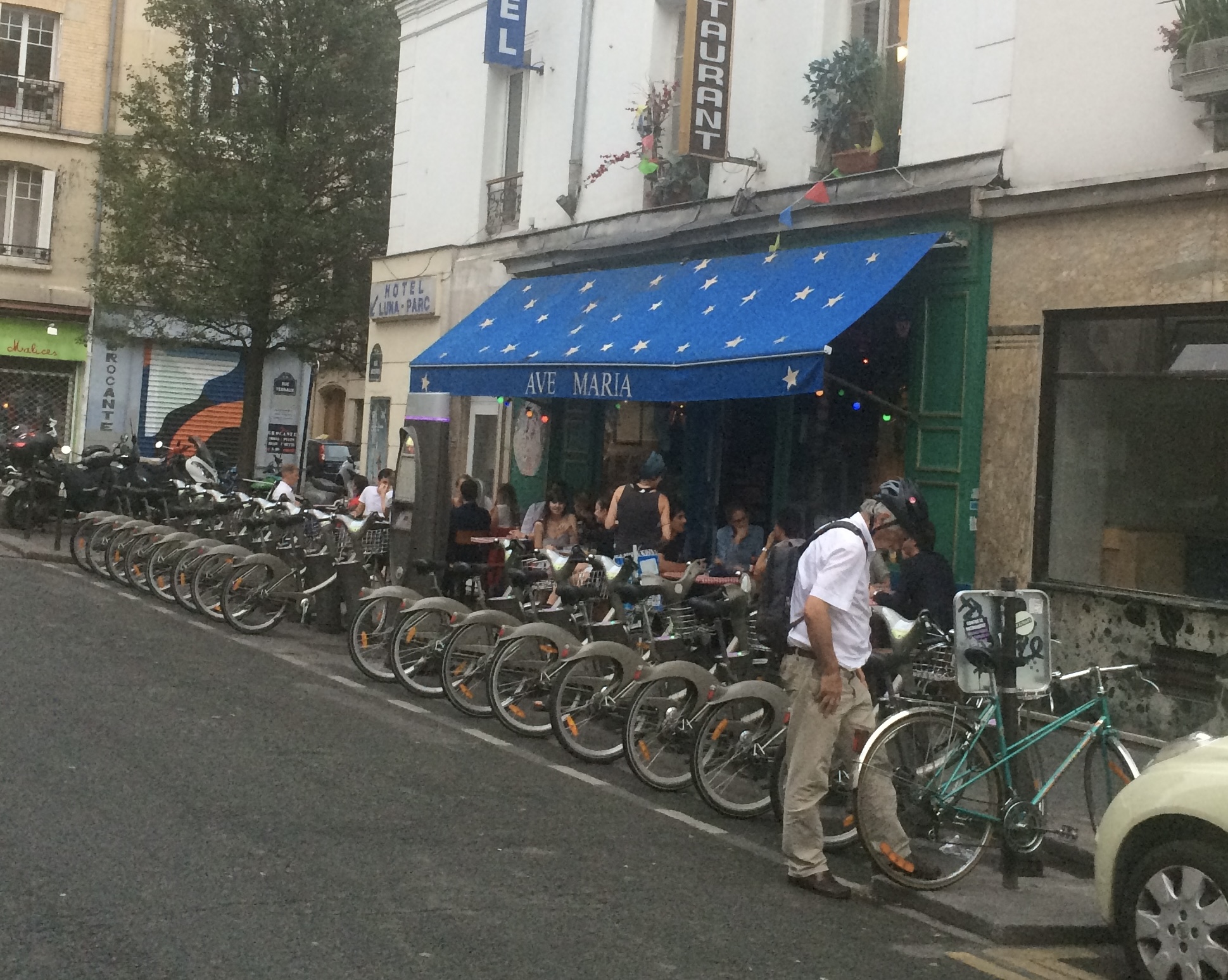
Your best other mode of self-propelled transportation is bicycling. Paris has been effecting some very significant changes to make the city more ecologically friendly, and making bicycles easily and very inexpensively available has been a very popular contribution to this goal. Vélib is the system for bicycle ride sharing (the name comes from the mix of vélo, which is another word for bicyclette; and libre, which means “free” in the sense of “liberty”). The system boasts over 1400 docking stations across the city, with 19,000 bicycles available for you to hop on to and dart away. One thing, though: Parisian traffic is dense and sometimes treacherous. Helmets are not provided; you need to be extremely careful. Download the Vélib app from your favorite app store; the instructions for using the system are pretty clear. One thing that makes this so valuable is that the app will show you the docking station closest to your current location, as well as the docking station closest to your destination. You also have the choice between a standard bike (green) and power-assisted ones (blue).
Public transportation
Cabs and Ride Shares
First off: if you’re going to take a taxi from the airport, do not go with any of the guys hanging out at the airport muttering “taxi” under their breath. Go to the actual taxi stand, which is very clearly marked. (You'll find more info on taxis from the airport here.) Taking a cab or using a ride share app works exactly as you would expect it to. Despite the rumors of Parisian taxi drivers trying to rip you off, Tom has never—not even once—experienced this kind of treatment in a cab. Your Uber app will work in Paris; your Lyft app, however, currently will not. You should also seriously consider downloading the Bolt app. Bolt is a European-based mobility company, and in Tom’s experience they’re more likely to come and to arrive more quickly than Uber. One thing you should understand, though, is that with either app it might take several tries and several minutes before the app matches you with a driver. Once the connection is made, though, it works just the way it does for you at home. How much does it cost? For 10-20 minute trips on both apps figure 15–22 euros, depending on time, traffic, and distance.
Mass transit
The metro, of course. Easy to use and it'll get you anywhere. A written description of how to use the metro would appear mystifying and obtuse; once you take the thing two or three times it will be so obvious how it works that you'll just laugh at how foolish you were the first time you did it. I know: how are you going to 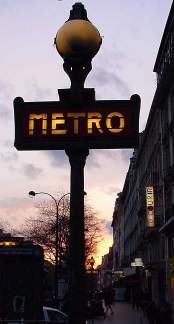 get someplace the first time? Beats me. Try your luck. Just keep in mind that you always need to know the name of the direction you're going, not the line number alone. The name of the direction is simply the name of the last stop on the line; look at the map and follow the line to the end: there's your name. Each line thus has two names, depending on whether you're coming or going.
get someplace the first time? Beats me. Try your luck. Just keep in mind that you always need to know the name of the direction you're going, not the line number alone. The name of the direction is simply the name of the last stop on the line; look at the map and follow the line to the end: there's your name. Each line thus has two names, depending on whether you're coming or going.
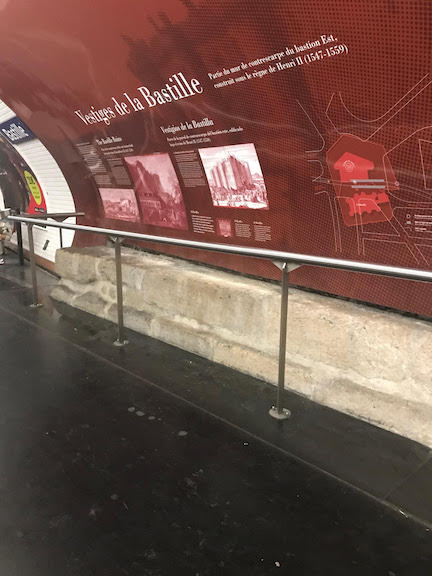 Check out the map at the bottom of this page. Line 4 (sort of maroon, in the north central part of the city) is called Porte de Clignancourt if you're traveling north, and Montrouge (Mairie de Montrouge) if you're traveling south (follow it to the end).
Check out the map at the bottom of this page. Line 4 (sort of maroon, in the north central part of the city) is called Porte de Clignancourt if you're traveling north, and Montrouge (Mairie de Montrouge) if you're traveling south (follow it to the end).
You can transfer between lines at stops that are marked with an open circle on the map, called a correspondance, and in the stations where you're transferring the signs for where to go are always marked with an orange banner. Look for the name of the direction (last stop) on the line you're transferring to, and get on that line.
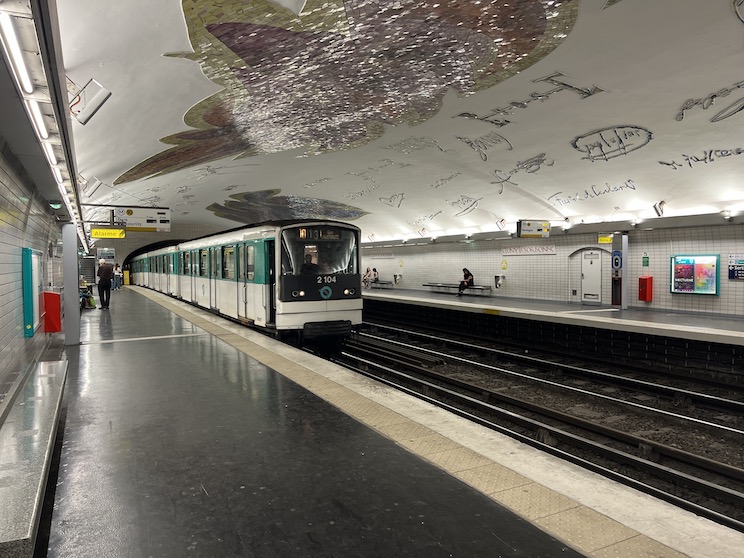
| OK, because people have been asking and because you can't seem to take any initiative, here's a brief lesson on how to take the metro. |
The newer lines, and those that have been renovated, are nearly completely automated, some without drivers. They have these transparent walls on the platforms to keep you from hurling yourself onto the tracks, and when the trains arrive at the station the doors open automatically. In some of the driverless trains you can stand at the very head of the train, where the drivers are in the manually operated trains, and watch as the train flies forward. Sometimes you have to urge little kids to move out of the way to do this, but it’s really fun.
The Bus System
If you’re feeling brave and adventurous, try to figure out the bus system; you can see things and get a better sense of where you are. It’s not that hard to figure out, but sometimes you go places you hadn’t planned on going, which, I guess, isn’t so bad. Metro tickets and Navigo passes work on the busses as well—you can ride pretty much as far as you want—within the city of Paris—on just one ticket. They used to have this really baroque zone system requiring different numbers of tickets, but that’s gone by the wayside, unless you want to take the bus to the suburbs, which you won’t. Tom loves the buses because they go places the metro doesn't and because you can see what's going on around you. Just give them a shot.
There are plenty of electronic metro and bus maps to be had, with some of the most comprehensive to be found at the Transilien site and the RATP site (with the latter easier to use in Tom's opinion). The "Bonjour–RATP" site is even friendlier, especially if you rely on your phone alot, and it's really good at plotting out directions based on your current location. You really should download that app onto your phone (and it works in both French and English).
Paying your way
A somewhat byzantine system of paying and proving that you did was completely replaced on January 1, 2025. A new feature of Paris transportation is that what used to be a complex system of zones is now simplified: your trip costs the same no matter where you're going. You can also load all of this on your phone so you only need to wave your phone at the validation points in the metro or on the bus and then go your merry way. Get yourself the "Bonjour RATP" app for your phone, and you can follow the instructions there or check out what our friends at Reddit have built to guide you through the process of paying with your phone here. The app is also great for showing you the best (and alternative) routes to get wherever you want to go, and it will also tell you if there are problems on any of the train or bus lines. Occasionally, however, it hallucinates when giving you walking directions, so you might want to cross-check these with Google maps or some such other geomapping app. Oh, and by the way: the "Métropolitain" design you see above—and which you'll still see around town in some places—was originally created by Hector Guimard in 1900. The model you see here is hanging in the Musée d'Orsay.
Metros and busses are patrolled by people in smart blue uniforms called controleurs (control freaks?), and they can fine you and humiliate you and just make things in general unpleasant for you if you don't have the proper ticket or pass on you. If you don't, you're in what's called a SITUATION IRREGULIERE, and many people who have been in this situation were never heard from again.
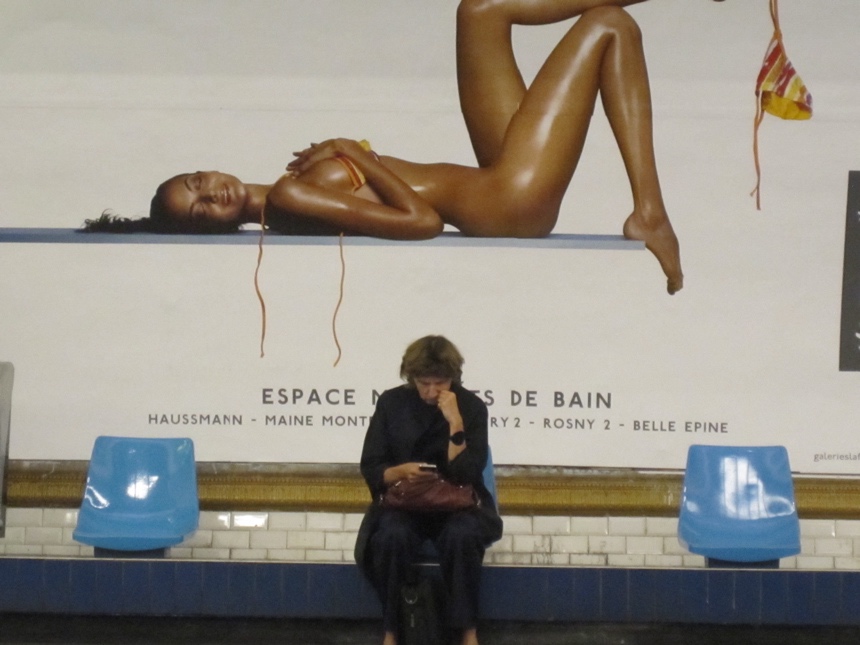 Sandy highly recommends the Batobus, a boat (bateau, pronounced "bato" + bus—get it?) that takes you up and down the Seine, stopping at nine locations. You can buy a pass good for 1, 2, or 365 days (at an intriguing pricing of 23, 27, 73 euros, respectively).
Sandy highly recommends the Batobus, a boat (bateau, pronounced "bato" + bus—get it?) that takes you up and down the Seine, stopping at nine locations. You can buy a pass good for 1, 2, or 365 days (at an intriguing pricing of 23, 27, 73 euros, respectively).
Getting around at night. The metro closes at about 1:15 am (or 2:15 on weekends and before holidays)—and this varies, so don't push your luck—and doesn't open again until about 5:30 am. (And here's a cool thing: you'll know if you made the last metro if you note as the train pulls into the station that the two lights placed above the windshield on the front of the train are flashing slowly [as opposed to being just on]. I’m not sure the value of this, except you can feel all, "whew! we made it!" when you do.
The bus system isn't that hard to figure out, but sometimes you go places you hadn’t planned on going. “whew! we just made it!” when you do.)If you're going to be out after this (and you will be) then you must do one of several things: stay in your neighborhood, walk, take a cab or an Uber (which works somewhat well here), a G7, a Bolt, or venture into the exciting world of the night buses. I, of course, am all for the exciting world of the night buses—Noctilien. The night busses travel a different schedule from the day busses; they come slightly less frequently (although on weekends it's something like every ten minutes), and they cover slightly less ground, so unless you happen
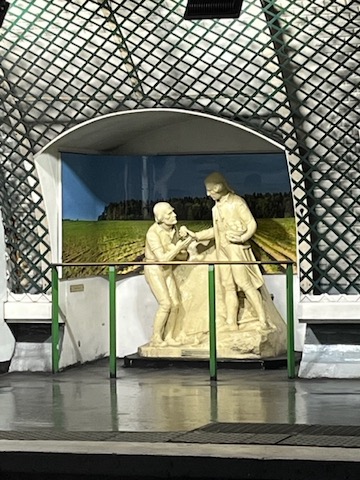 to be staying right on the night bus's route, you'll probably have to walk a bit when you get off, but so what? Here's a lot of official information in English on the Noctilien. You can recognize where the night buses stop by this helpful little "N" and by the lovely dark blue color scheme. If you have a passe navigo (monthly or weekly) this is all you need. The people on the night bus all look angry and mean, and some of them are. Do not get into a conversation with any of them, especially if you are by yourself. Most of them will be drunk. If you just mind your own business, however, you'll really be fine—people have other things on their mind than worrying about your cheap self.
to be staying right on the night bus's route, you'll probably have to walk a bit when you get off, but so what? Here's a lot of official information in English on the Noctilien. You can recognize where the night buses stop by this helpful little "N" and by the lovely dark blue color scheme. If you have a passe navigo (monthly or weekly) this is all you need. The people on the night bus all look angry and mean, and some of them are. Do not get into a conversation with any of them, especially if you are by yourself. Most of them will be drunk. If you just mind your own business, however, you'll really be fine—people have other things on their mind than worrying about your cheap self.
Check out Bob Reynolds' amazing Subway Page for insanely interesting info on public transportation the world round.
Metro Map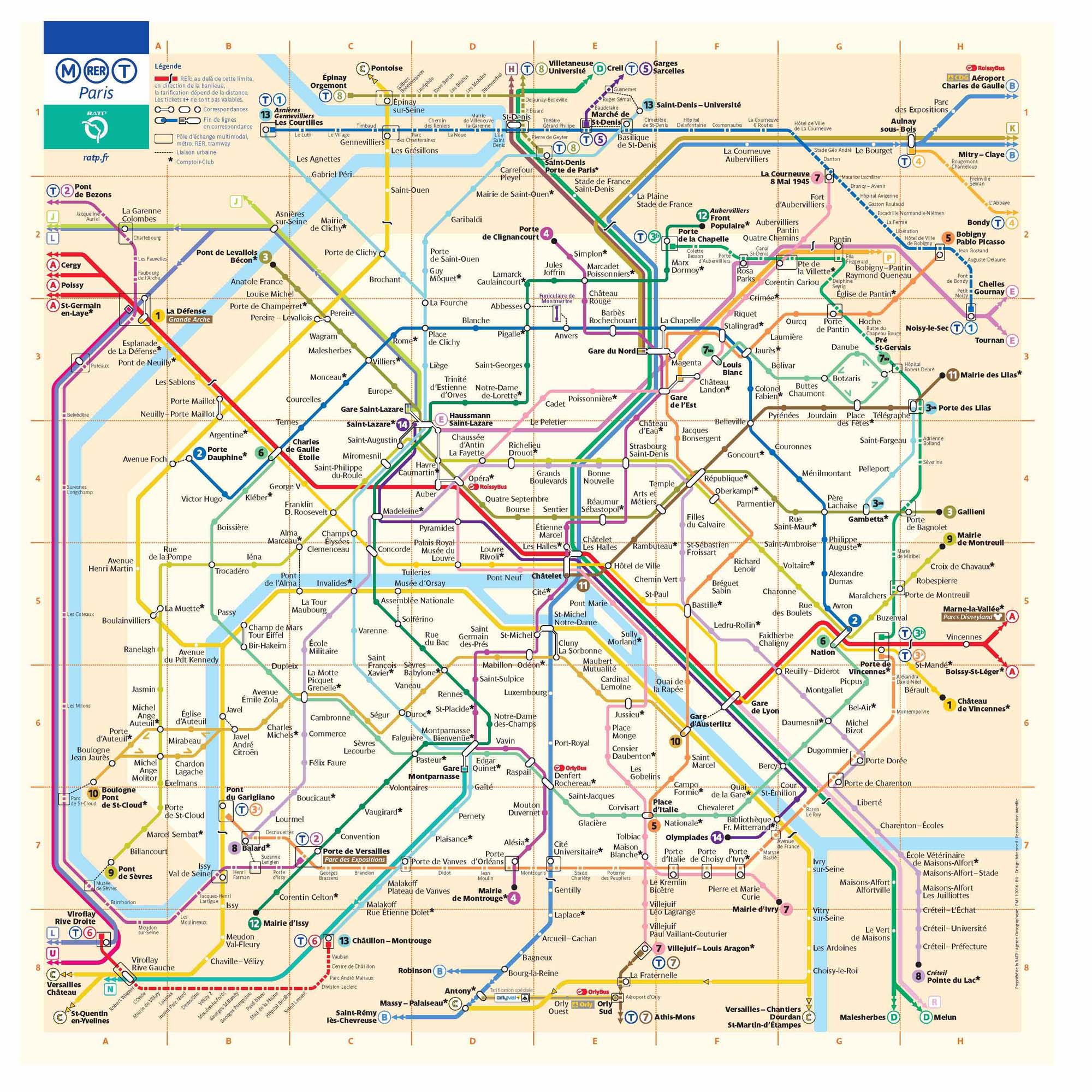
*Gustave Caillebotte. "Paris Street, Rainy Day" (1877), Art Institute of Chicago
